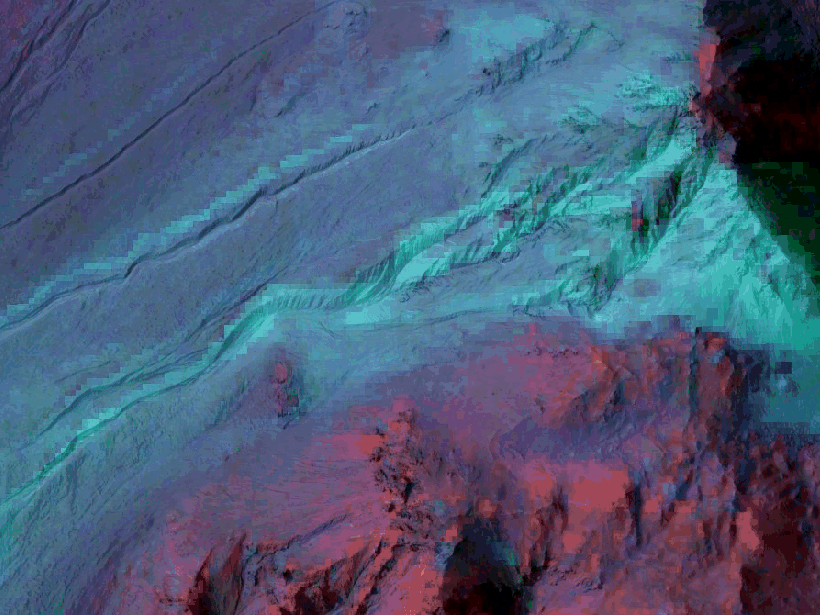Source: Geophysical Research Letters
Networks of narrow channels cut into steep slopes in several regions on Mars. These gullies look much like some water-carved channels that form on Earth, but liquid water would be unstable in the Martian atmosphere, so researchers have proposed alternative gully-forming mechanisms. New research by Núñez et al. shows that seasonal frost-driven processes may serve a primary role in forming the Red Planet’s gullies.
Using data from NASA’s Mars Reconnaissance Orbiter, the researchers analyzed more than 100 gullies in the northern and southern hemispheres of Mars. They examined images captured by the spacecraft’s Compact Reconnaissance Imaging Spectrometer for Mars (CRISM), the High Resolution Imaging Science Experiment (HiRISE), and the Context Camera (CTX).
The images revealed that the mineral composition of sediments deposited in and downhill from the mouth of Martian gullies matched “upstream” rock. This suggests that gully formation processes did transport materials downhill. However, the scientists found no mineral evidence that the deposits had interacted with liquid water. This evidence might include any one of the hydrated minerals that can form in the presence of water—sulfates like gypsum, carbonates like calcite, or clays, for example.
In middle- to high-latitude gullies, the researchers instead observed seasonal accumulation of carbon dioxide and water frost. These findings are consistent with the idea that carbon dioxide sublimation could destabilize rocky materials and cause gas-lubricated debris flows, driving gully formation.
Since scientists first discovered Martian gullies in 2000, some of these channels have undergone visible changes. The team studied the deposits of multiple gullies in detail and found no evidence for long-term interaction with liquid water, such as clays or sulfates. Although the observations do not rule out the possibility that liquid water may have contributed to the formation of some of these features, they favor a frost-driven mechanism for the formation of Martian gullies. (Geophysical Research Letters, doi:10.1002/2016GL068956, 2016)
—Sarah Stanley, Freelance Writer
Citation:
Stanley, S. (2016), How do gullies form on Mars?, Eos, 97, https://doi.org/10.1029/2016EO058057. Published on 26 August 2016.
Text © 2016. The authors. CC BY-NC-ND 3.0
Except where otherwise noted, images are subject to copyright. Any reuse without express permission from the copyright owner is prohibited.

